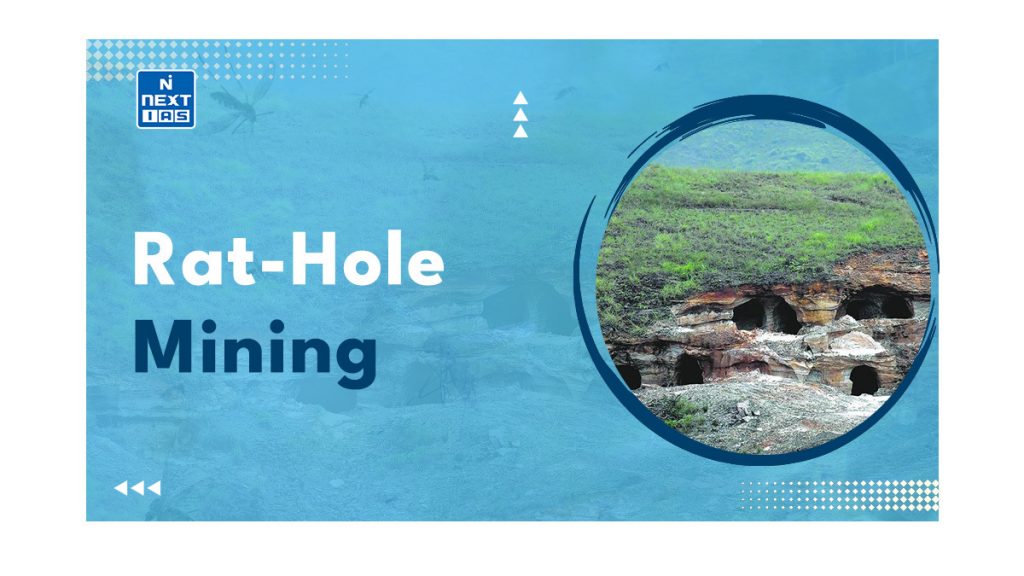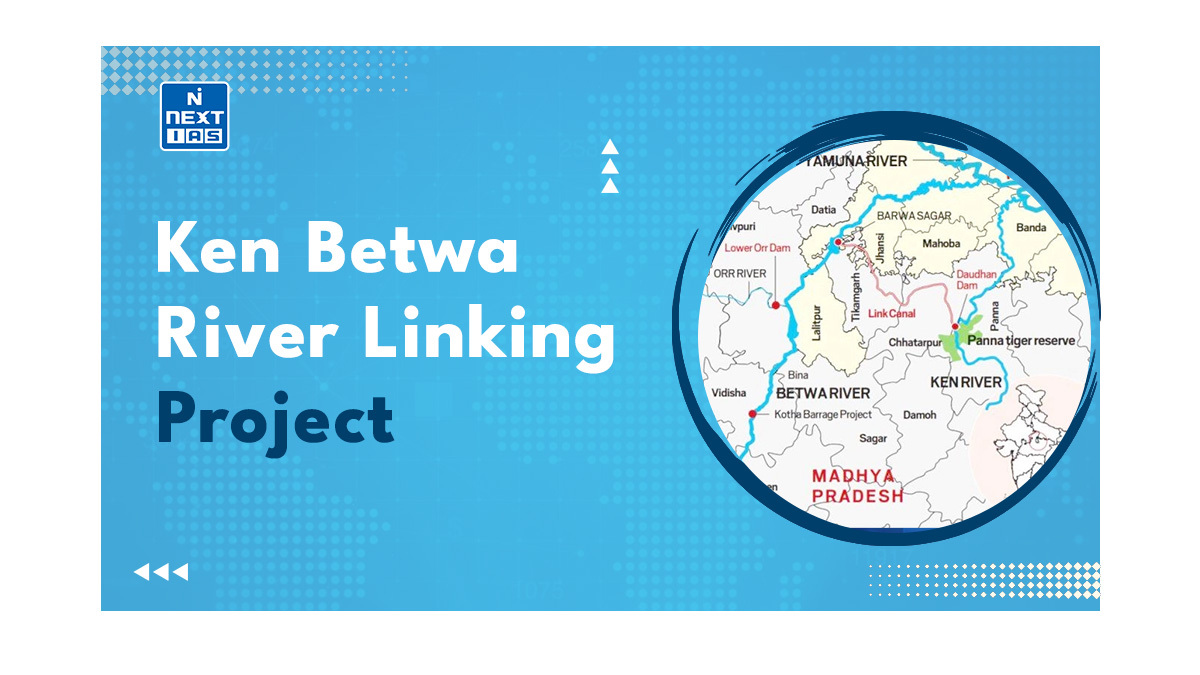
Rat-hole mining, an illegal and hazardous method of extracting coal in India, has been in the news now and then. Of late, it was used during the Uttarakhand Tunnel Rescue Ops. This article of NEXT IAS aims to explain the intricacies of rat-hole mining and the multifaceted challenges posed by it.
What is Rat-Hole Mining?
Rat-hole mining is a primitive and hazardous method of mining, which involves digging small tunnels just large enough for a person to crawl through to extract coal.
Rate Hole refers to the narrow pits dug into the ground, which are just large enough for one person to descend and extract coal.
Once the pits are dug, miners descend to the coal seams using ropes or bamboo ladders. They then extract coal manually using primitive tools such as shovels, pickaxes, etc.
Types of Rat-Hole Mining
Broadly, Rat-Hole Mining is of two types:
| Side Cutting | In this type of Rat-Hole Mining, narrow tunnels are dug on the hill slopes. Workers use this tunnel to go inside until they find the coal seam. |
| Box Cutting | In this type of Rat-Hole Mining, first a rectangular opening is made of a size varying from 10 to 100 sqm. That opening is, then, used to dig a vertical pit upto the depth until the coal seam is found. The process, then, involves digging rat-hole-sized tunnels horizontally through which workers can extract the coal. |
Areas of Prevalence of Rat-Hole Mining
Use of this technique of coal mining is, generally, prevalent in the Northeastern states, especially Meghalaya.
Despite several attempts by authorities to regulate or ban such practices, they have been prevalent in these regions. Some of the major reasons for the prevalence of this technique are as follows:
- These areas are majorly hilly terrains where coal seams are very thin. This makes open coal mining or digging big holes very difficult and economically non-profitable. As a result, miners prefer rat-hole mining.
- Such cases are not witnessed in Jharkhand and Chhattisgarh because the coal seams are thick in these areas.
- The backwardness of these areas means that there is under-education and a lack of employment opportunities. Thus, local people see rat-hole mines as an opportunity to earn a livelihood.
- Since it involves less investment and good returns, investors prefer to go for this type of mining.
Concerns Caused by Rat-Hole Mining
Environmental Issues
- Deforestation: As trees are often cut down to make rat holes, this type of mining results in large-scale deforestation. This, in turn, results in the destruction of habitats and threats to biodiversity.
- Water Pollution: Runoff from rat-hole mines contaminates nearby water sources with harmful chemicals and pollutants. This hampers both surface and groundwater quality along with endangering aquatic ecosystems.
- Acidification: These mines cause acidic runoff, known as Acid Mine Drainage (AMD). This degrades water quality in affected water bodies, along with reducing biodiversity.
- Land Degradation: Rat-hole mining results in erosion of topsoil. This leaves a large tract of land scarred and barren.
- Air Pollution: Rat-hole mines, usually, lack proper ventilation. Also, by making coal available, it promotes coal burning. All these exacerbate the problem of air pollution.
Social and Human Rights Issues
- Unsafe Working Conditions: This technique, being a primitive one, does not involve making professional tunnels or ensuring safety measures. These mines become even more dangerous during the rainy season when water floods into the mining areas. All these lead to mishaps, including death of many workers.
- The accidents in rat-hole mines in Meghalaya, leading to injuries and fatalities, are quite often in the news.
- Compromising Labor Rights: This type of mining involves hazardous working conditions, thus compromising labor rights.
- Child Labor: Mainly children are employed in this type of mining because their thin and small body allows ease of accessing depths. Thus, this type of mining promotes child labor.
- Community Displacement: Unregulated rat-hole mining leads to the displacement of local communities. This, in turn, creates several socio-economic issues such as loss of livelihoods.
NGT’s Ban on Rat-Hole Mining
Because of myriad concerns caused by it, the National Green Tribunal (NGT) banned this practice in Meghalaya in 2014. However, the state government, then, appealed the order in the Supreme Court and the practice remains prevalent in the state.
A panel appointed by the Meghalaya High Court in 2022 found that the rat-hole mining continues unabated in Meghalaya.
Suggested Measures
- Strengthening and enforcing regulatory measures to curb this practice.
- Promoting modern mining techniques to encourage responsible and safe mining practices.
- Empowering the local community, including the creation of livelihood opportunities, to make people turn away from such mining.
- Investing in Renewable Energy to reduce dependency on coal for energy can help curb such types of coal-mining activities.
Rat-Hole mining poses severe threats to both the environment and human lives. A multi-faceted approach, as suggested above, should be adopted to curb this practice.
Related Facts
Uttarakhand Tunnel Rescue Ops: Around 40 laborers got trapped in the Silkyara Bend Barkot tunnel in Uttarkashi district of Uttarakhand collapse. After auger machines failed to help the rescue ops, rat hole miners were called in for the same.
GS - 3




